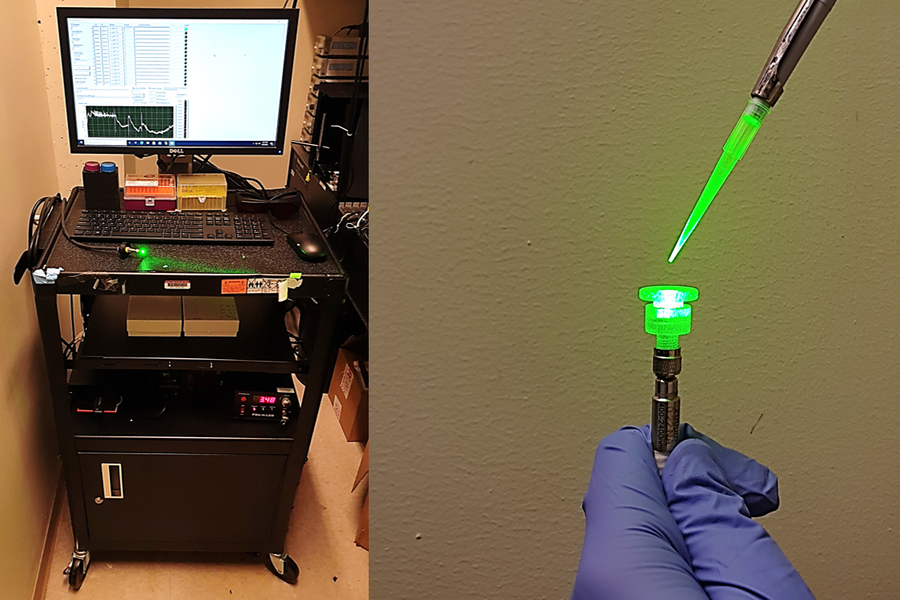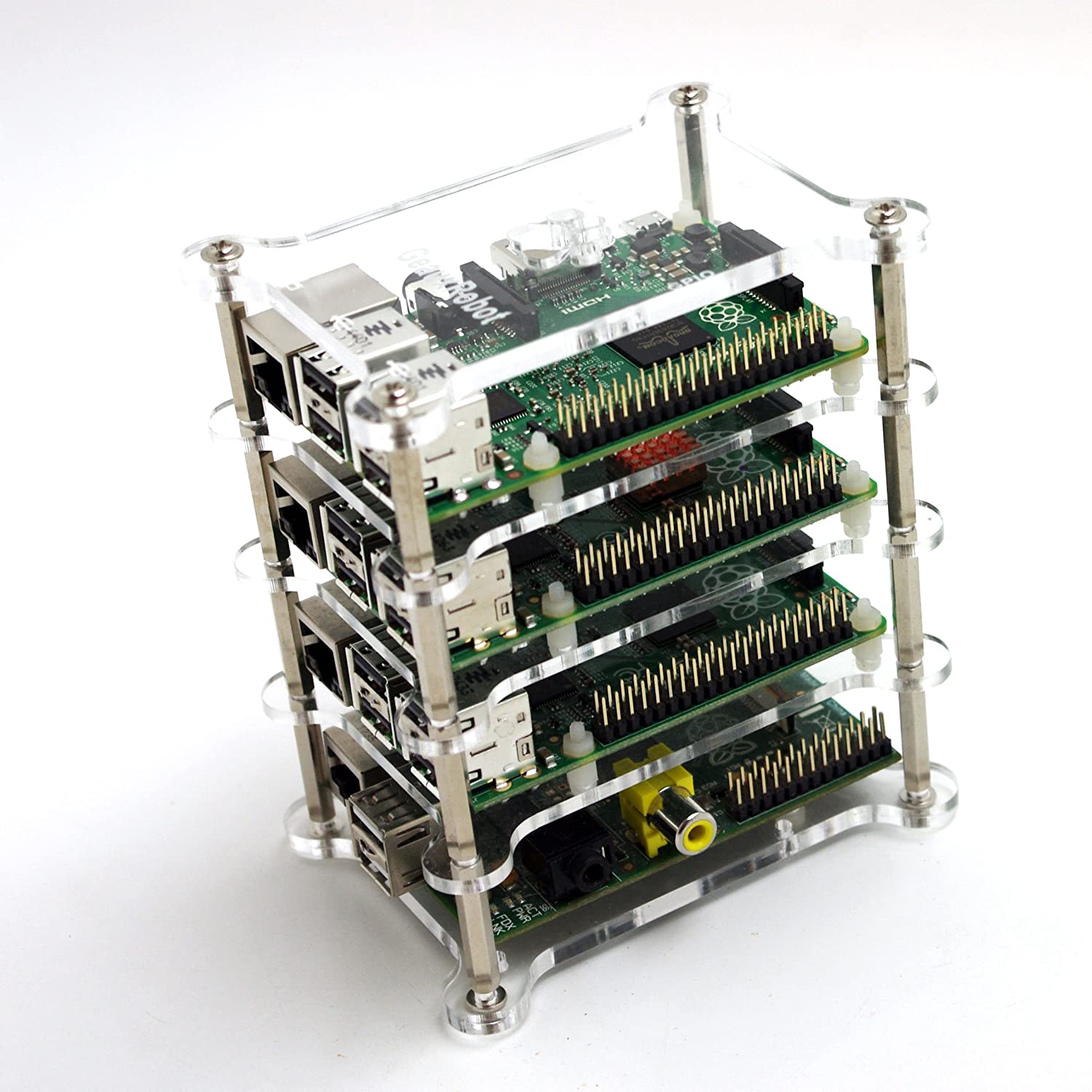; Date: Sat Nov 06 2021
Tags: Coronavirus »»»»
MIT scientists have developed an exciting new technology for quickly developing biological "sensors". Using specially designed carbon nanotube structures, the technology will glow (in the infrared spectrum) in the presence of targeted chemicals. The technique allows rapid development of structures to target specific chemicals, for example a COVID-19 sensor was designed in just 10 days.

The technique is called Corona Phase Molecular Recognition (CoPhMoRe). The team has used it to detect a variety of chemicals, such as proteins, insulin, riboflavin, L-thyroxine and oestradiol. It works either by taking a sample from the animal, or by injecting the detector (sensor) into the animal. In either case, infrared light is used to cause fluorescence from the sensor which can be registered by an infrared camera or microscope.
THe word "sensor" is used, but is not what we traditionally call a sensor where we pass an electrical current through wires into a gizmo that detects something. Instead this is a chemical sensor, meaning it is a stable material that reliably reacts in a certain way in the presence of certain chemicals. The reaction is the infrared fluorescence.
CoPhMoRe sensors are constructed by first forming carbon nanotubes of a specific structure. Carbon nanotubes are hydrophobic, meaning they repel water. Purpose-designed heteropolymers which have both hydrophilic and hydrophobic properties. The hydrophobic side of the heteropolymer is absorbed onto the carbon nanotube, masking the potentially toxic nature of the carbon nanotube. The heteropolymer forms a structure around the nanotube, which the team describes as "wrapped" around the nanotube. The outer side of this wrapping is able to react with a targeted chemical in a way which increases its near-infrared fluorescence.
The word Corona in this case refers to the shape of the structure formed when the heteropolymer bonds with the carbon nanotube. It forms loops, and the loops look something like the corona of the sun.
They use a different polymer for each targeted chemical, which is designed for the purpose of detecting that chemical. Therefore, to detect a new chemical, the team must study that chemical and design a new heteropolymer.
For COVID-19 detection, the research team demonstrated detection of both the SARS-COV-2 spike protein, and the nucleocapsid. In both cases, a fluid sample is taken, and the CoPhMoRe sensors are built into a fiber-optic tip. With this prototype device, the result is given within five minutes, and does not need to be sent to a laboratory.
They were able to detect the SARS-COV-2 nucleocapsid when dissolved in saliva. This was particularly challenging because saliva contains carbohydrates and digestive enzymes that interfere with protein detection. It is much simpler to take a saliva sample than a nasal sample, making this an attractive approach.
The result achieved a limit of detection lower than the commonly available rapid tests, meaning the CoPhMoRe approach is both more sensitive and more accurate.
The potential from using CoPhMoRe in screening for diseases
The CoPhMoRe is not unique to COVID-19 detection, but can be applied to pretty much any chemical. But let's take our current experience with COVID-19 as an example of what could happen in future pandemics.
An airplane filled with passengers arrives at an airport. Each passenger can be quickly screened with a CoPhMoRe device, allowing agents to immediately determine who must be quarantined. The detection will be far more accurate than a temperature scan, and more reliable than a possibly forged test results certificate.
Since they were able to develop the SARS-COV-2 detector in 10 days, it suggests that tests for other pathogens could be quickly developed as well.
Could there not be variations of this test developed for a range of common diseases? Wouldn't this simplify diagnosis in doctors offices or hospitals?
But, wait, that's not all -- Tracking insulin levels
In one experiment the researchers learned how to detect insulin using CoPhMoRe techniques. They've also experimented with an implantable form, which could be like a tattoo. Bring the two ideas together, and you could have a tattoo that automatically detects insulin levels or other important marker chemicals.
That means a diabetes patient could quickly test their insulin levels without needing to take a blood sample, using a finger pricking device, and then quickly determine whether they need an insulin injection.
Don't get too excited -- not productized
What's described here is a result from a research laboratory. It is not a finished product of any kind.
Can this be productized? Can the carbon nanotubes and heteropolymers be manufactured in any kind of massive scale? What price will it be when productized?
Videos
Links
Corona Phase Molecular Recognition (CoPhMoRe) -- Strano Research Group
October 26, 2021:
Carbon nanotube-based sensor can detect SARS-CoV-2 proteins
October 21, 2021:
Antibody-Free Rapid Detection of SARS-CoV‑2 Proteins Using Corona Phase Molecular Recognition to Accelerate Development Time
24 November 2013:
Molecular recognition using corona phase complexes made of synthetic polymers adsorbed on carbon nanotubes
September 13, 2021:
Researchers design sensors to rapidly detect plant hormones
2018 Feb 23:
Insulin Detection Using a Corona Phase Molecular Recognition Site on Single-Walled Carbon Nanotubes











